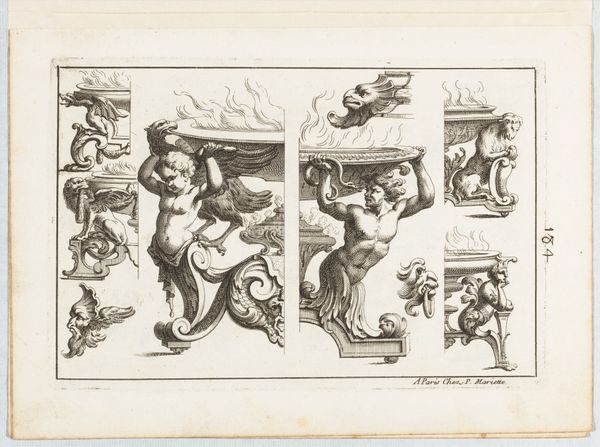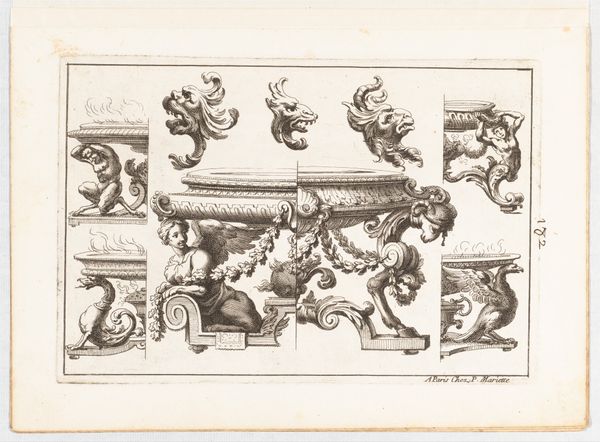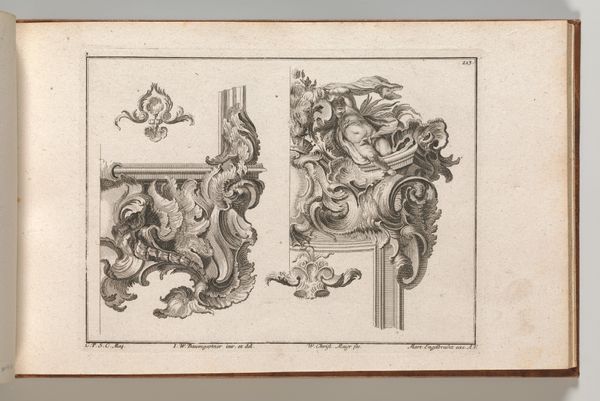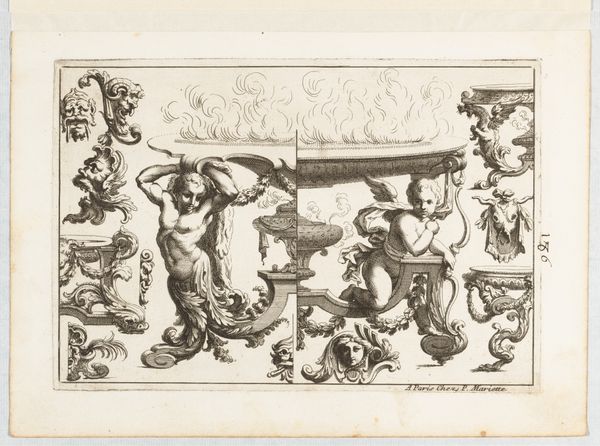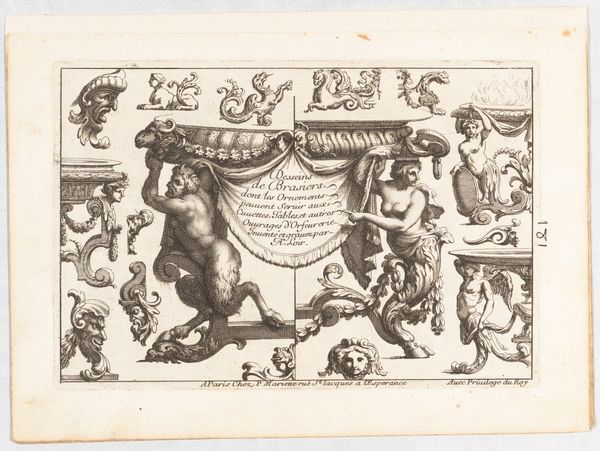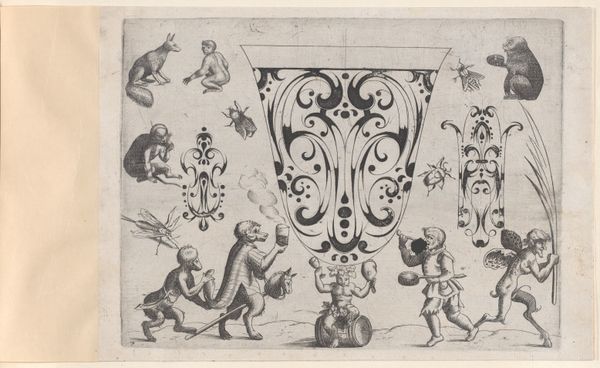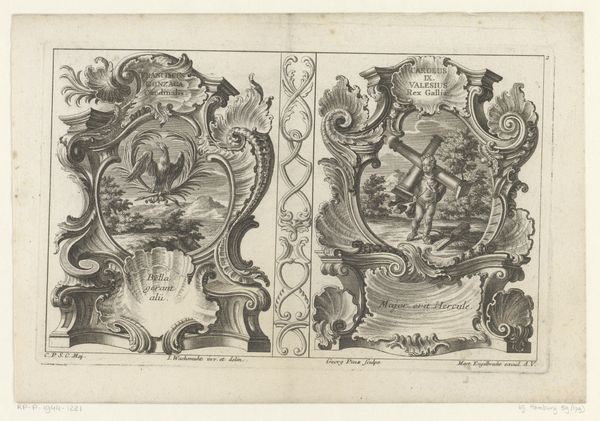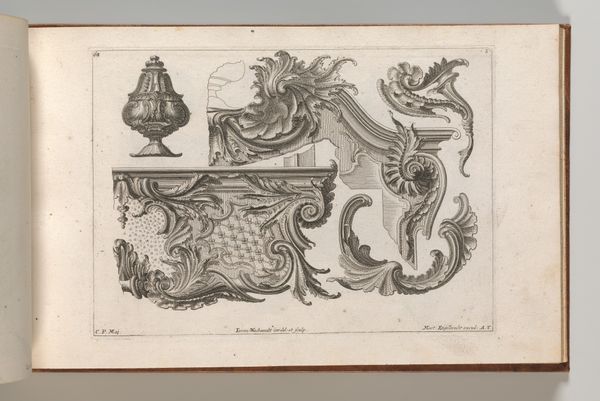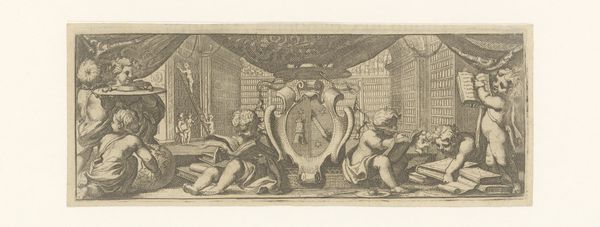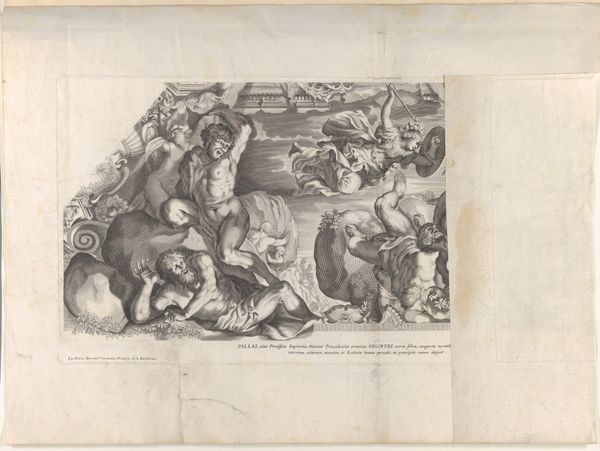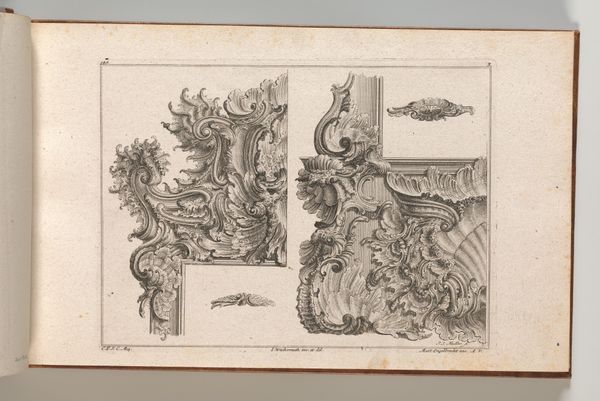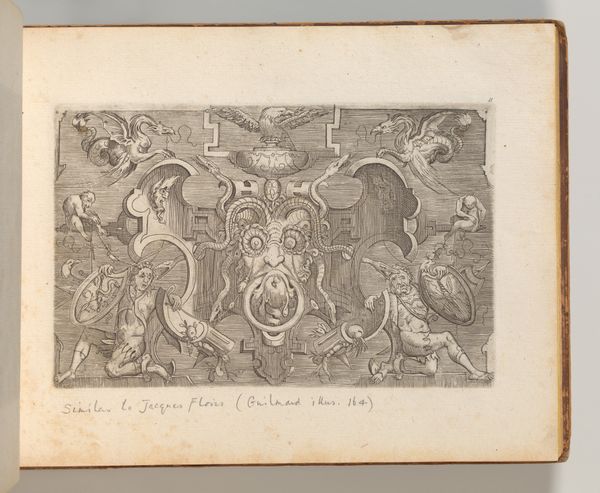
Desseins de Brasiers dont les Ornements peuuent Seruir aux Cuuettes, Tables, et autres Ouurages d'Orfeurerie, Plate 5 1660 - 1713
0:00
0:00
drawing, print, engraving
#
drawing
#
baroque
# print
#
figuration
#
history-painting
#
decorative-art
#
engraving
Dimensions: Plate: 6 1/4 × 9 5/16 in. (15.9 × 23.7 cm) Sheet: 7 11/16 × 10 15/16 in. (19.6 × 27.8 cm)
Copyright: Public Domain
Editor: Here we have "Desseins de Brasiers dont les Ornements peuuent Seruir aux Cuuettes, Tables, et autres Ouurages d'Orfeurerie, Plate 5" by Alexis Loir, dating somewhere between 1660 and 1713. It's an engraved print showing designs for braziers. I'm struck by the sort of… staged theatricality of the human figures incorporated into the designs. How would you interpret this work? Curator: Well, let's consider the function of these prints. These weren’t meant to be high art for a gallery. Instead, this plate, like many others from the period, served as a vital tool in the artistic and economic ecosystems. It's a catalogue of ideas. Look how it showcases different variations on a theme. How might a silversmith have used a print like this? Editor: As inspiration? A menu of design elements to incorporate into custom pieces? Curator: Exactly. And consider the social implications. Luxurious goods were potent status symbols. By offering designs featuring classical figures and elaborate ornamentation, Loir was catering to the desires of a wealthy elite eager to display their cultivated taste and financial power. Doesn't it say something about power, control and wealth, where the human figure is simply there to hold the wealth above its head? Editor: I hadn’t really thought about it as a reflection of power like that before, more just decorative. Curator: The decorative IS the power! This print, at the Met today, reveals much more about the society that produced and consumed it than just artistic preferences. The image participates in circulating a kind of visual language about class and status. Editor: That's a really interesting perspective. I see how focusing on its function reshapes my understanding. Curator: It gives the artwork more significance to its role in reflecting the society and the relationship between the creator, the consumer, and how this affected history.
Comments
No comments
Be the first to comment and join the conversation on the ultimate creative platform.
